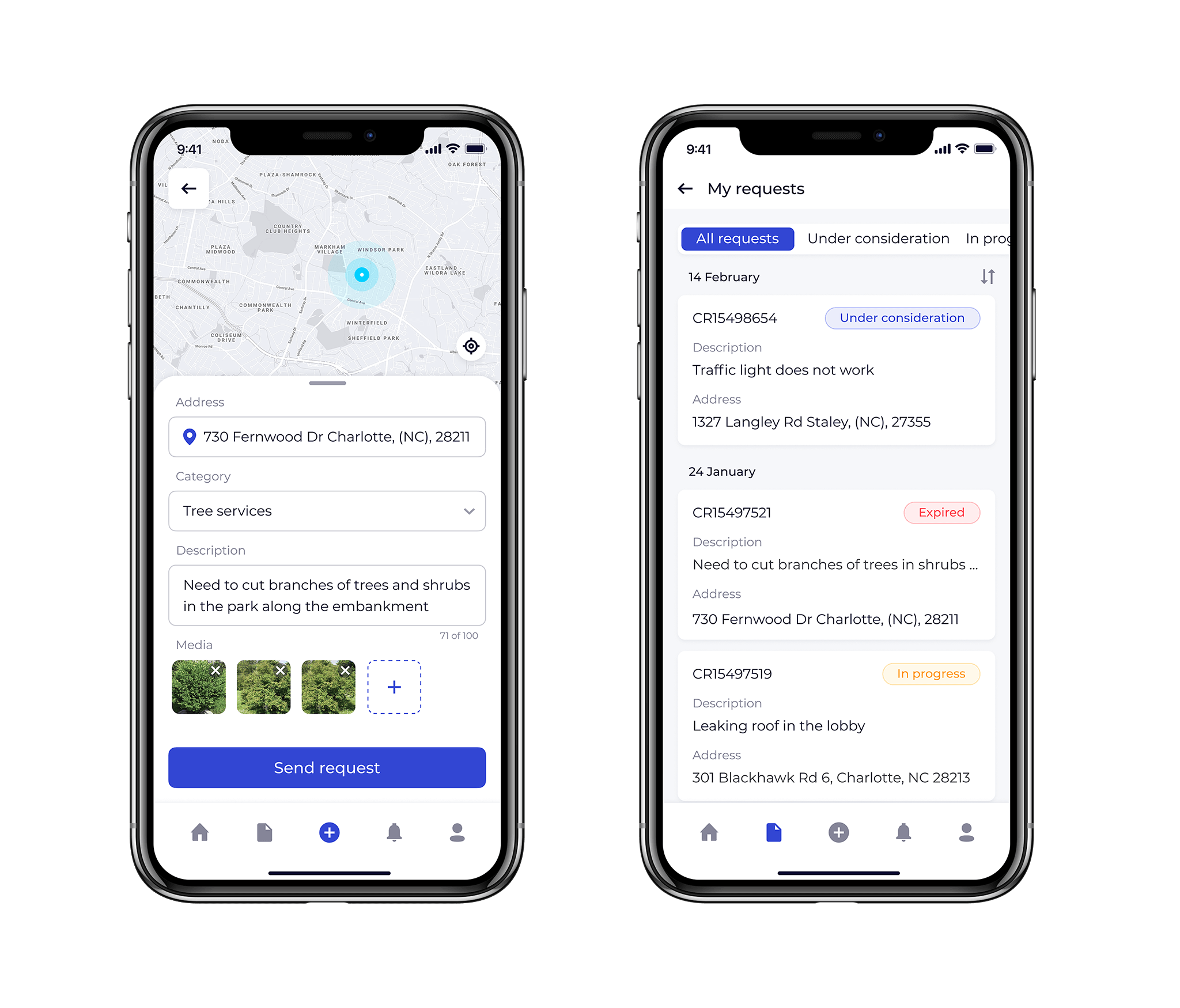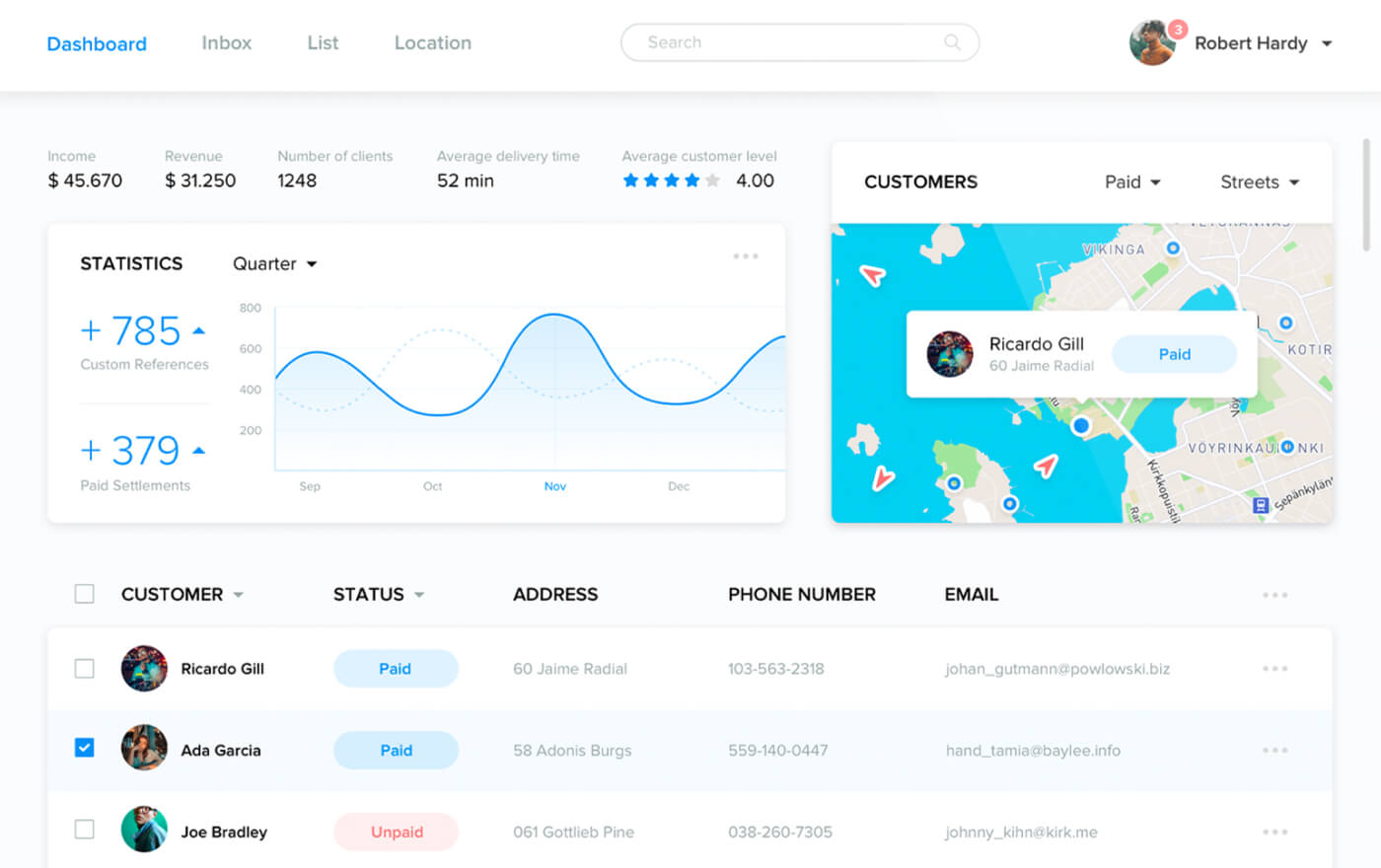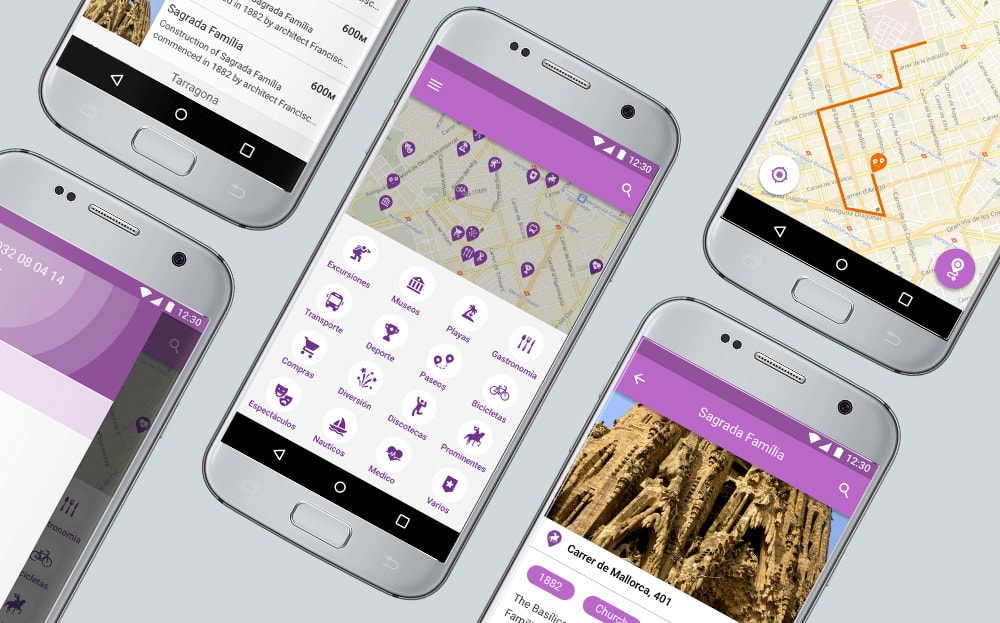Nowadays, apps with geolocation support are everywhere. The skillful use of a seemingly simple ability to determine a user’s location has already redefined how we shop, travel, or meet with other people. Uber, Tinder, Airbnb, and many other apps have become a regular part of life for millions of people and inspired countless businesses to take their services to the next level.
Companies from various business areas adopt location-based apps to provide their clients with a more comfortable experience. If you want to build a geolocation app for your business but don’t know where to start, we will gladly shed some light on this important question. In this article, we’ll outline how geolocation apps work and explain how you can build a location-based application that better fits your business requirements.
Geolocation Apps Main Features
Apps that use geolocation rely on geolocation services that we can divide into two big categories: outdoor and indoor technologies.
The best example of an app that uses outdoor geolocation is Google Maps that allows users to determine their location and find better routes to the destination point. Outdoor navigation is based on GPS technology relying on signals received from satellites. If a user’s device doesn’t receive a GPS signal for some reason, its location can be calculated by acquiring data from the cell tower to which the smartphone is connected. In this case, the so-called Cell ID is used. The bad news is that this approach doesn’t guarantee such accuracy as GPS. Another option is Wi-Fi positioning. In this scenario, your smartphone can define your location using signals from Wi-Fi access points.
Indoor technologies, on the other hand, are intended to provide more accurate navigation inside the building. For example, geofencing is a location-based technology that relies on GPS, cellular, and Wi-Fi data. Apple’s iBeacon and Google’s Eddystone use BLE (Bluetooth Low Energy) for indoors positioning. When you go shopping with an app that works with these technologies, you can approach a built-in beacon at a certain distance. The application will show additional information about a specific product. If you want to see some examples of indoor navigation apps, you can check Mapsted, a Canadian technology company that primarily specializes in navigation inside large malls.
According to the specifics of a particular app, developers can implement one of the described geolocation technologies for providing a better user experience. On your smartphone, you most probably have dozens of such apps. Geolocation is used in social network apps and messengers (Facebook, WhatsApp), dating apps (Tinder), travel apps (TripAdvisor, Booking), weather apps (Yahoo Weather), and on-demand delivery apps (Uber, UberEats, Lyft), etc.
Creating a Geolocation App
Geolocation apps look like an excellent way to invest your time and money, but the real question is how to make a geolocation app. In this chapter, we’ll share a small guide that will help you decide which steps to take on your way to be a proud owner of your own location-based app.
First of all, it’s essential to perform market research. It will help you define which type of geolocation app you should build to reach your target audience. Without deep knowledge of your competitors and the features they provide, you run the risk of wasting money by developing an app that nobody cares about. First, to build a successful geolocation app, you must know who your users are. Are they travelers? Are they homebodies? What are their habits? What problems do they have, and how will your app help to solve them?
After you answer these questions, you have to take a look at the existing geolocation solutions. Maybe, there’s already an app that solves the same problem. Even if there is, don’t give up. Learn the strong and weak points of your competitor and develop new ideas about your future app’s functionality. For example, if your initial plan was to build a dating app, and you suddenly found out that there are already many of them, you can add your special something to your idea. You may decide to develop an app for dog owners who want to find a company for a morning walk with their pets. Many sports lovers would be glad to find a mate for regular jogging, which can be a good idea for a geolocation app. As you can see, there are always some options. Only your imagination and business flair are the limit.
If you don’t have time and resources for market research, you can always rely on your tech partner. Since, most probably, you’ll hire a software development company for building your geolocation app, you can keep in mind that usually, such companies have business analysts on their staff. And one of the business analysts’ duties is to help you develop application requirements. Another essential thing to take into consideration is the software vendor’s experience. You can check the company’s portfolio to see if developers have enough experience in creating geolocation apps. Used technologies and industries that a software development company usually works in also play an important role. If you want to know what clients think of cooperating with a particular software developer, you can find some helpful reviews on such websites as Clutch or Goodfirms.
After you, along with a business analyst, decide which features should be implemented in your application, developers can pick up the tech stack. According to the requirements to target mobile platform (iOS and/or Android) and some other essential aspects of your future app, such as the need for an in-app interactive map, the development company will decide which combination of such technologies as HTML5 geolocation API, Google Maps API, Core Location API, android.location package, Yandex Maps, UI JavaScrip libraries, testing tools, and many many other building bricks will guarantee a better outcome.
At this point, it’s pretty important not to bite off more than you can chew. Instead of spending time and money on developing a full-featured app, you can start with MVP. MVP or Minimum Viable Product is a basic version of the final product that provides enough functionality for testing it in real-life conditions and receiving valuable feedback from the first users. This information will help you decide if you’re moving in the right direction and make some adjustments at the early development stages when all changes are relatively cheap.
Your app will work with such sensitive information as users’ location, personal conversations, travel details, and who knows what else. That’s why you have to remember that ensuring data safety is one of the most critical tasks. If your users become easy targets for scammers, your business reputation will be at risk. Therefore, discuss privacy and data protection with your software vendor. Make sure that your app uses multi-factor authentication, encrypts communications, and uses an SSL certificate, Network Security Configuration (Android) and App Transport Security (iOS), and doesn’t store any unencrypted data on the user’s device.
Our Expertise
Our expertise in custom software development allows us to create great geolocation apps for companies that work in various business domains.
App for City Services is an example of a customer services application that was designed for simplifying and automating communication between municipal institutions and citizens:

The app works on PCs and mobile devices. It allows sending issue reports on-the-go by pointing to a particular location on the interactive map to help municipal workers respond faster. When enabled, the built-in geolocation feature can detect the user’s location automatically. It allows citizens to report graffiti and illegal signatures on the walls and control the quality of provided municipal services. Also, application users can receive recent news on local events that will take place near them.
Multi-modal Transportation Management System is our application for logistics and transportation companies. It helps to keep fleet information updated and allows drivers to choose the shortest routes and avoid delays:

This app with GPS tracking support provides users with real-time vehicle data, trip data, an interactive map that allows searching for locations and pickup points, costs and time analytics, and more info. Thanks to geolocation, drivers can quickly determine their current location, find the nearest place to stop, and check the approximate arrival time. Also, the application helps to track the route in real-time.
Read also A Good Time for a Startup to Build a Food Delivery App
GPS Vehicle Tracking System is another example of an app for transportation companies that helps to keep the fleet on schedule and enables drivers to choose better routes:
![]()
This geolocation mobile app allows using the GPS tracking system to show information about traffic jams, which helps drivers who want to choose the best way to get to the place of destination. Reduced driving time allows companies to cut costs, increase productivity, and improve customer satisfaction. The system can save route histories and allows using interactive route replays that break each day down into detailed trip segments.
Tourist Guide Application provides tourists with information about specially selected objects or all the nearby attractions, organized by category, located in a certain geographical area:

This application helps planning trips and finding the best routes around different countries. The cross-platform application works across all modern mobile devices and supports the offline mode. Our geolocation mobile app has a tracking function that allows using it as a turn-by-turn navigation device.
Conclusions
Geolocation app development sounds like an excellent idea, but things may become tricky since you have to choose a tech stack that better fits your business’s requirements. According to your company’s specifics, you may want to create an app that uses outdoor or indoor geolocation technologies. You may also want to build an app that measures the distance between the user and the closest object, such as a restaurant or local landmark. In-app maps that help develop optimal routes and track the vehicle location in real-time require a specific set of technologies.
It would help if you kept all these aspects in mind while planning your location-based app development. If you don’t have enough technical expertise, cooperating with an experienced software developer can be a decent option. Business analysts can help you explore the market to build a solution that customers will care about and decide on the must-have features. After choosing the most suitable geolocation technologies, developers can build an MVP to test how customers will accept your geolocation app idea in the market.
If you have an idea for a geolocation app that can improve your business but don’t know where to start, contact us to receive a free consultation.